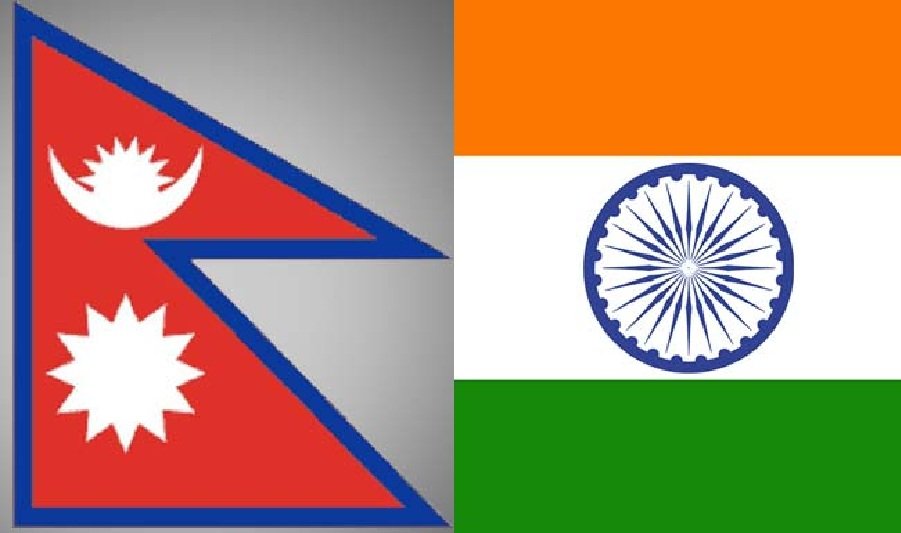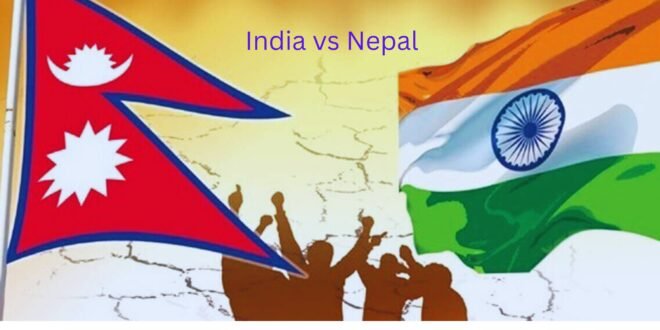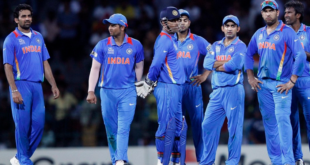Introduction
In today’s article, we will delve into the intriguing comparison between two South Asian neighbors, India and Nepal. These countries, while geographically close, exhibit striking differences in various aspects such as culture, geography, economy, and more. India vs Nepal Let’s explore the multifaceted relationship between these nations in detail.
India vs Nepal
Start Time And Date
Thursday, August 24, 2023
Geographical Differences
India vs Nepal
India: India is the seventh-largest country globally, known for its diverse geography. It boasts the mighty Himalayan mountain range in the north, vast plains, dense forests, and a lengthy coastline along the Indian Ocean.
Nepal: Nepal, on the other hand, is a landlocked country that is home to eight of the world’s tallest mountains, including Mount Everest. Its rugged terrain and breathtaking landscapes make it a trekker’s paradise.
Historical Connections
India vs Nepal
India and Nepal share a rich historical relationship dating back centuries. Both countries have been influenced by each other’s cultures and traditions. The ties between them are deeply rooted in ancient history.
Cultural Diversity
India: India is a mosaic of cultures, languages, and traditions. With over 2,000 distinct ethnic groups and more than 19,500 languages and dialects spoken, it’s a true melting pot of diversity.
Nepal: Nepal may be smaller in size, but it boasts a remarkable diversity of ethnicities and languages as well. The culture here is greatly influenced by Buddhism and Hinduism.
Economic Contrasts
India: As one of the world’s fastest-growing major economies, India is an economic powerhouse. It has a diverse economy encompassing agriculture, manufacturing, and a burgeoning technology sector.
Nepal: Nepal, in contrast, faces economic challenges due to its landlocked status and geographic constraints. Agriculture is a significant part of its economy, with tourism also playing a vital role.
Political Landscapes
India: India is the world’s largest democracy, with a multi-party system. It has a robust political landscape characterized by frequent elections and a parliamentary system of government.
Nepal: Nepal has seen significant political changes in recent years, transitioning from a monarchy to a federal democratic republic. It continues to evolve politically.
Language Diversity
India: India’s linguistic diversity is astounding, with several major languages recognized and many more spoken regionally. Hindi and English serve as official languages, facilitating communication.
Nepal: Nepali is the official language of Nepal, spoken by the majority. However, numerous regional languages and dialects are also prevalent.
Tourism and Natural Beauty
Both India and Nepal are renowned for their natural beauty. India offers diverse landscapes, from the backwaters of Kerala to the deserts of Rajasthan. Nepal’s allure lies in its pristine Himalayan vistas and trekking trails.
Religious Significance
India: India is the birthplace of several major religions, including Hinduism, Buddhism, Jainism, and Sikhism. It’s a land of pilgrimage for millions worldwide.
Nepal: Nepal is closely associated with Buddhism and is home to Lumbini, the birthplace of Lord Buddha. It holds immense religious significance for Buddhists.
Cuisine and Gastronomy
India: Indian cuisine is celebrated globally for its diverse flavors and use of spices. Each region offers unique culinary delights, from the spicy curries of the south to the tandoori dishes of the north.
Nepal: Nepali cuisine is influenced by its geography and culture. Dal Bhat, a traditional meal of lentil soup and rice, is a staple. Momos, dumplings filled with various fillings, are also popular.
Education and Literacy
India: India has a vast education system with numerous prestigious institutions. However, disparities in education levels and literacy rates persist, with urban areas faring better than rural ones.
Nepal: Nepal faces challenges in education due to its difficult terrain and economic constraints. Efforts are ongoing to improve literacy rates and access to quality education.
Healthcare Systems
India: India has a diverse healthcare system, with advanced medical facilities in urban areas. However, healthcare accessibility remains a concern in rural regions.
Nepal: Nepal’s healthcare system is gradually improving, but it faces challenges in providing adequate medical care to remote areas.
Transportation Infrastructure
India: India has an extensive road and rail network connecting its vast expanse. It also boasts a growing aviation sector with numerous international airports.
Nepal: Nepal’s mountainous terrain makes transportation challenging. Roads are limited in some areas, and air travel is vital for reaching remote regions.

Diplomatic Relations
India and Nepal share a diplomatic relationship marked by cooperation and occasional challenges. Both nations work together on various regional and international platforms.
Geographical Differences
Historical Connections
Cultural Diversity
Economic Contrasts
Political Landscapes
Language Diversity
Tourism and Natural Beauty
Religious Significance
Cuisine and Gastronomy
Education and Literacy
Healthcare Systems
Transportation Infrastructure
Diplomatic Relations
rade and Economic Relations
India: India and Nepal share a significant trade relationship due to their proximity. India is Nepal’s largest trading partner, with goods and services flowing freely across their open border. This economic cooperation helps both nations in terms of commerce and employment opportunities.
Nepal: Nepal benefits from its economic ties with India, which provides essential goods and services. However, there have been occasional trade disputes, highlighting the complexity of their economic relationship.
Environmental Challenges
India: India faces numerous environmental challenges, including air pollution in major cities and concerns about deforestation. Efforts are being made to transition to cleaner energy sources and enhance environmental sustainability.
Nepal: Nepal’s pristine environment, particularly in the Himalayan region, is threatened by climate change and deforestation. Conservation efforts and sustainable tourism practices are being promoted to protect its natural beauty.
Social Welfare and Development
India: India’s size and diversity also mean significant disparities in social welfare and development. While urban areas flourish with modern amenities, rural parts of the country still lack access to basic services like clean water and healthcare.
Nepal: Nepal’s development indicators have been steadily improving, but challenges persist in providing access to education and healthcare, especially in remote areas. Initiatives are underway to bridge these gaps.
Festivals and Celebrations
India: India is renowned for its colorful festivals celebrated throughout the year. Diwali, Holi, Eid, and Christmas are just a few examples of the diverse cultural celebrations that unite the nation.
Nepal: Nepal also has a rich tapestry of festivals, with Dashain and Tihar being the most significant. These celebrations often involve elaborate rituals and vibrant street parades.
Sports and Recreation
India: Cricket is the most popular sport in India, with a passionate fan base. Additionally, field hockey and kabaddi have historical significance. The Indian Premier League (IPL) is one of the world’s most-watched cricket leagues.
Nepal: While cricket is growing in popularity, especially among the youth, football (soccer) remains the most widely played and followed sport in Nepal. The country has its national football league and participates in international competitions.
Table of Contents
Future Prospects
Both India and Nepal have promising futures but also face various challenges. Cooperation in areas such as trade, tourism, and environmental conservation can benefit both nations. It is crucial for them to address shared concerns and work together to ensure stability and growth in the region.
Access Now
For those interested in exploring the beautiful landscapes and rich cultures of India and Nepal, access travel resources and opportunities by visiting https://bit.ly/J_Umma.
In conclusion, the comparison between India and Nepal reveals a nuanced relationship filled with both commonalities and disparities. While they may share a border, each country possesses a unique identity shaped by its history, culture, and geography. Understanding these distinctions enhances our appreciation of the beauty and complexity of South Asia.
Conclusion
In conclusion, India and Nepal, despite their geographical proximity, are distinct in many ways. From their diverse cultures and languages to their economic and political landscapes, these two countries offer a fascinating contrast. Exploring their unique characteristics enriches our understanding of South Asia’s complexity.
FAQs
Are India and Nepal culturally similar?
While they share some cultural elements, both countries have distinct traditions and languages.
Which is the larger economy, India, or Nepal?
India has a significantly larger and more diverse economy than Nepal.
Is it easy to travel between India and Nepal?
Yes, there are land border crossings and regular flights connecting the two nations.
What is the dominant religion in India and Nepal?
Hinduism is the predominant religion in both countries, with significant Buddhist populations in Nepal.
Can I trek in India like in Nepal?
India offers trekking opportunities, especially in the Himalayan region, but Nepal is renowned for its trekking trails, including the Everest Base Camp trek.
 Cric Enjoy Sports News, Cricket Update, Live Streaming
Cric Enjoy Sports News, Cricket Update, Live Streaming







